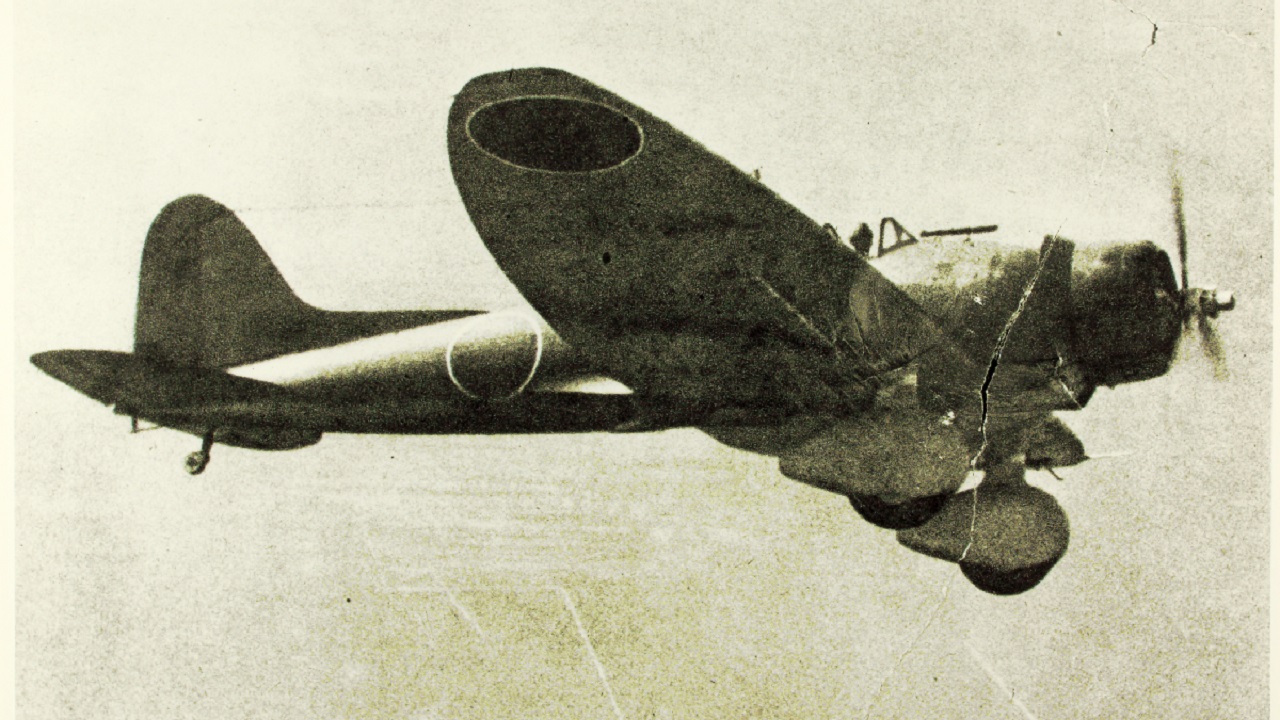Meet the Aichi D3A – As we pass the 80th anniversary of the Battle of Midway, it is important to look at both sides of the battle. While the American warplanes were instrumental in winning the battle, Axis warplanes from the Japanese played a strong role in the day. A prime example was the Aichi D3A1 Type 99 “Val” dive bomber.
Aichi D3A – Venerable “Val”
As is the case with many of the warplanes involved in Midway, the Aichi dive bomber’s reputation had already preceded it well before that epic conflict. Indeed, the D3A was the first Japanese warbird to attack American targets during WWII, starting with Pearl Harbor on the “Day of Infamy” and following up immediately thereafter with the strikes on Clark Field in the Philippines.
Just as the Aichi’s U.S. counterpart, the Douglas SBD Dauntless, sank more Japanese shipping than any other Allied aircraft, the D3A sank more Allied warships than any other Axis airplane. Nazi Germany’s dive bomber, the Junkers Ju-87 Stuka, may have been more famous than its Japanese counterpart but was used more in the ground attack role.
The “Val” made her maiden flight in January 1938 and was officially introduced into service with the Imperial Japanese Navy (IJN) in 1940, replacing the Aichi D1A Type 94/96 “Susie” biplane. Both of these bombers were manufactured by Aichi Kokuki KK (Aichi Kōkūki Kabushiki Kaisha, i.e. Aichi Aircraft Co., Ltd.), which after the war was reorganized as a manufacturer of Kei cars. In 1966 the company was integrated into Nissan and developed the Nissan Sunny, better known to American commuters as the Sentra.
The Type 99 dive bomber carried a normal bomb load consisting of a single 250 kilogram (551-pound) bomb situated under the fuselage, swung out under the propeller on release by a trapeze. Optionally, two additional 60-kilogram (132-pound) bombs could be mounted on wing racks located under each wing outboard of the dive brakes.
To aim these bombs, the pilot’s position was equipped with either a Type 95 or Type 99 bombsight. For air-to-air and strafing work, the plane had two forward-firing 7.7mm (.303 caliber) Type 97 machine guns in the forward fuselage upper decking and a single swivel-mounted 7.7mm Type 92 machine gun for the rear gunner. The max speed of the plane was 240 mph (387 kph).
The D3A1 was actually “blooded” in combat even before its official adoption by the IJN when, in November 1939, its crews flew missions supplementing the Imperial Japanese Army in the capture of Nanning.
As a result of this battle, the Japanese successfully cut off the municipality Chongqing from the ocean, effectively severing foreign aid to Nationalist China’s war efforts by the sea, rendering Indochina, Burma Road, and “The Hump” the only way to send aid to Chiang Kai-shek’s beleaguered forces. Fast forward to April 1942 – two months before Midway – the “Val” scored its first success against the Royal Navy during the Indian Ocean raid, attaining a remarkable 80% hit rate, resulting in the sinking of the heavy cruisers HMS Cornwall and HMS Dorsetshire – which one year earlier had participated in the sinking of the Bismarck – and the light aircraft carrier HMS Hermes.
Aichi D3A – During Midway
After the initial loss of the aircraft carriers Akagi, Kaga, and Sōryū on June 6, 1942, the remaining Japanese carrier, the Hiryū (“Flying Dragon”) launched 18 Vals – in tandem with Nakajima B5N “Kate” torpedo bombers – against the American carrier fleet. Three of the “Vals” scored hits on the carrier USS Yorktown. Two of those planes were shot down shortly after releasing their payloads, whilst the third tumbled out of control and crashed into the carrier’s flight deck, apparently, this was not a deliberate kamikaze-style attack.
The second of the dive bombers’ bomb hits caused the most damage to the Yorktown, as it amounted to a textbook “down the stack shot” that pierced the flight deck and exploded in the lower part of the funnel, rupturing the uptakes for three boilers, disabling two boilers, and extinguished the fires in five more boilers. The combined bomb strikes weren’t sufficient to actually sink the carrier, but, along with two torpedo hits scored by the “Kates,” left “the Fighting Lady” dead in the water, soon to be finished off by the IJN submarine I-168.
Aichi D3A – Where Are They Now
A total of 1,495 D3As were built, and the warbird served right up until the Japanese surrender. Only three survive today, all located Stateside: one is currently under restoration at the Planes of Fame Museum – whose website notes that “It will be the only flyable Val in the world” – in Chino, California, while two unrestored specimens are on display at the National Museum of the Pacific War in Fredericksburg, Texas.
Christian D. Orr is a former Air Force officer, Federal law enforcement officer, and private military contractor (with assignments worked in Iraq, the United Arab Emirates, Kosovo, Japan, Germany, and the Pentagon). Chris holds a B.A. in International Relations from the University of Southern California (USC) and an M.A. in Intelligence Studies (concentration in Terrorism Studies) from American Military University (AMU). He has also been published in The Daily Torch and The Journal of Intelligence and Cyber Security. Last but not least, he is a Companion of the Order of the Naval Order of the United States (NOUS).

